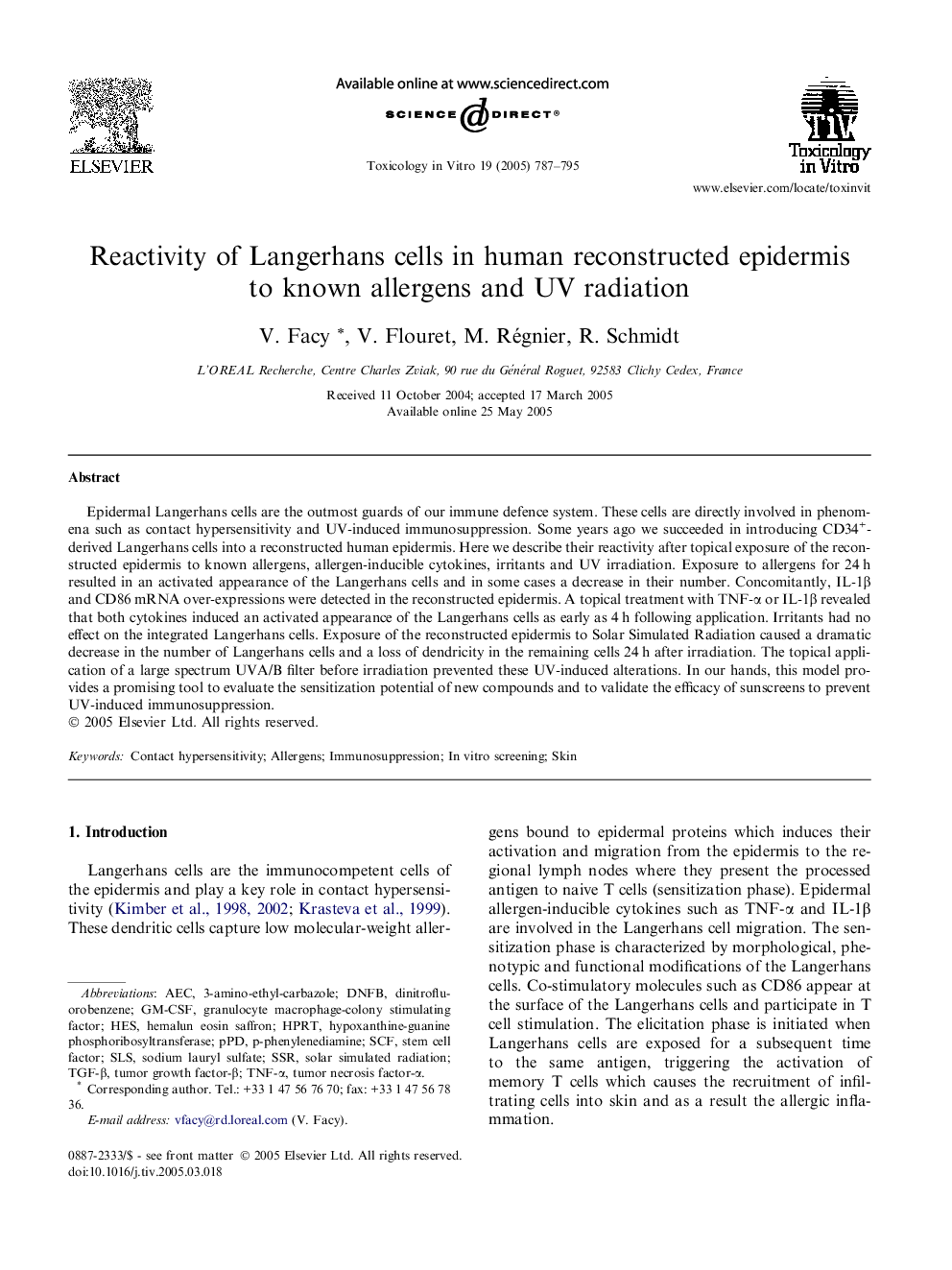| Article ID | Journal | Published Year | Pages | File Type |
|---|---|---|---|---|
| 9038411 | Toxicology in Vitro | 2005 | 9 Pages |
Abstract
Epidermal Langerhans cells are the outmost guards of our immune defence system. These cells are directly involved in phenomena such as contact hypersensitivity and UV-induced immunosuppression. Some years ago we succeeded in introducing CD34+-derived Langerhans cells into a reconstructed human epidermis. Here we describe their reactivity after topical exposure of the reconstructed epidermis to known allergens, allergen-inducible cytokines, irritants and UV irradiation. Exposure to allergens for 24 h resulted in an activated appearance of the Langerhans cells and in some cases a decrease in their number. Concomitantly, IL-1β and CD86 mRNA over-expressions were detected in the reconstructed epidermis. A topical treatment with TNF-α or IL-1β revealed that both cytokines induced an activated appearance of the Langerhans cells as early as 4 h following application. Irritants had no effect on the integrated Langerhans cells. Exposure of the reconstructed epidermis to Solar Simulated Radiation caused a dramatic decrease in the number of Langerhans cells and a loss of dendricity in the remaining cells 24 h after irradiation. The topical application of a large spectrum UVA/B filter before irradiation prevented these UV-induced alterations. In our hands, this model provides a promising tool to evaluate the sensitization potential of new compounds and to validate the efficacy of sunscreens to prevent UV-induced immunosuppression.
Keywords
TGF-βDNFBHprtAECSCFGM-CSFPPDSLSp-phenylenediamineSSRAllergensHESSolar simulated radiationContact hypersensitivitytumor necrosis factor-αdinitrofluorobenzenesodium lauryl sulfateImmunosuppressiontumor growth factor-βIn vitro screeningStem Cell FactorTNF-αgranulocyte macrophage-colony stimulating factorhypoxanthine-guanine phosphoribosyltransferaseSkin
Related Topics
Life Sciences
Environmental Science
Health, Toxicology and Mutagenesis
Authors
V. Facy, V. Flouret, M. Régnier, R. Schmidt,
